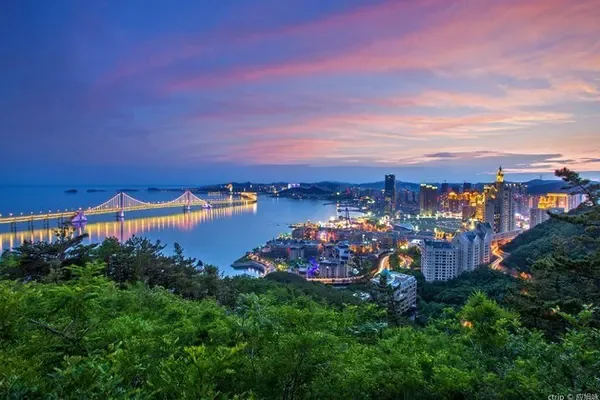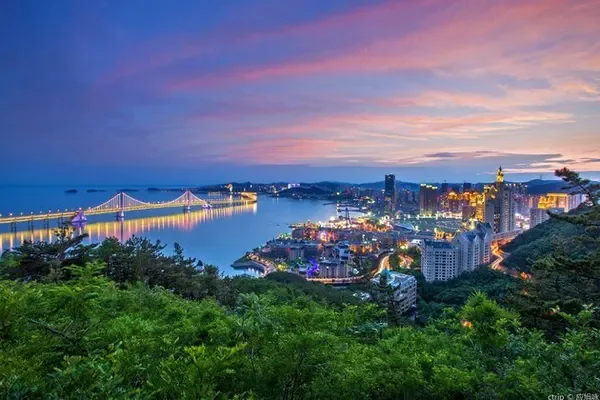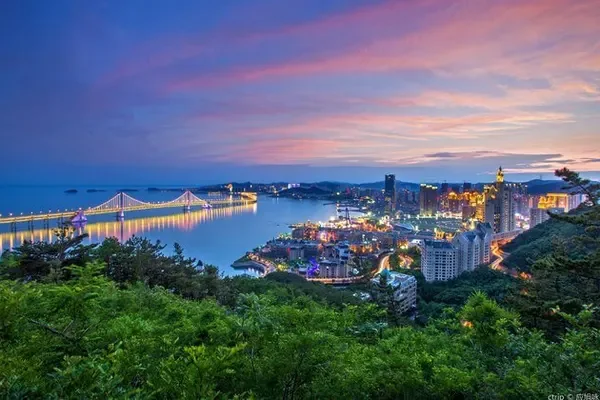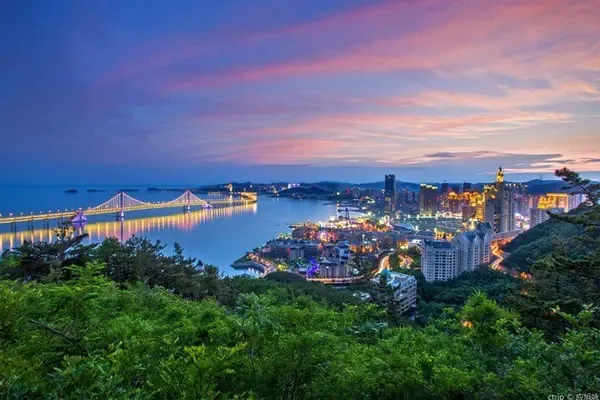Beijing weather: sunny
With whom: friends
Accommodation: Unnamed Hotel Nanluoguxiang Branch
I still live in this hotel, very close to the subway, surrounded by snack streets.



Beheaded Caishikou
The next day, I got off at Caishikou Station of the subway. Caishikou is famous for being the execution ground for murder. It turns out that Xuanwumen, which is close to here, used prison cars. There were three words "Regret late" written on the gate, and the prisoners pulled Come here and behead. The TV series "Decapitation at the Meridian Gate" didn't click when it came out of the Meridian Gate. In fact, it was pulled to the entrance of the vegetable market. After the prisoner was killed, the body was transported away, and the blood was covered with loess mats. After that, someone sold vegetables here , the vegetable market business is booming, so it is called Caishikou; there is Caishikou Department Store that sells gold jewelry in the west, and their sign is "the first gold store in Beijing". Those who want to buy jewelry can go shopping, my wedding ring Just bought it here.
There is a Heniantang pharmacy in the southwest of Caishikou intersection. Legend has it that in the past, Heniantang was the most famous medicine for knife wounds. After one execution, there was a "person" knocking on the door at night, and the little guy on duty asked what was going on. Yeah, the "people" outside have no brains.

Going south, you can see the former residence of Tan Sitong, but now it has become a courtyard, and there is only a sign left. If you go further to the southwest, you will see Fayuan Temple.
A Fayuan Temple, half of Chinese history
Fayuan Temple, formerly known as Minzhong Temple, was built in the 19th year of Zhenguan in the Tang Dynasty.
Back then, Emperor Taizong Li Shimin of the Tang Dynasty conquered Korea, saying that he wanted to avenge the soldiers who died in the Sui Dynasty. In the end, like Yang Guang, he couldn't return, and thousands of people froze to death on the way. Passing Youzhou, Li Shimin regretted it greatly, set up an altar to sacrifice to the dead, and ordered the construction of the Mizhong Temple. However, after a lapse of 51 years, it was not until Wu Zetian ascended the throne that the Minzhong Temple was built. It is now the Fayuan Temple.
In the Tianbao period of Tang Dynasty, An Lushan and Shi Siming went to Youzhou successively and launched a rebellion, which was called "Anshi Rebellion". Guangbao Pagoda, and erected a stone tablet to praise Anlu Mountain. After the failure of the rebellion, Shi Siming surrendered to the Tang Dynasty, polished the stone tablet and carved it again, saying that the pagoda was built for Tang Suzong Li Heng. At present, this stone tablet is stored in the Minzhong Pavilion of Fayuan Temple. It is about 1200 years ago and is the oldest stone tablet in the temple.
The temple also restored the name of "Minzhong Temple". It was not until the Yongzheng period that Minzhong Temple was named Fayuan Temple again.
However, during the Huichang period of the Tang Dynasty, Li Yan, Emperor Wuzong of the Tang Dynasty, launched a campaign to exterminate Buddhism. The temples in the eight states near Youzhou were basically destroyed, but only the "Minzhong Temple" survived.
But 37 years later, Minzhong Temple was destroyed in a fire. Until 892 AD, Li Kuangwei, the new governor of Youzhou, decided to rebuild the Minzhong Temple on this piece of rubble. However, during the reconstruction, a relic was accidentally discovered in the ruins, so Li Kuangwei decided to build a three-storey Guanyin Pavilion here. Probably because the Minzhong Pavilion is too high, as if towering into the clouds, so the folk proverb "Minzhong Pavilion, go to the sky and hold it" became a popular saying in Youzhou at that time.
In the Liao Dynasty, Youzhou became the battlefield for the Liao and Song Dynasties, and the Minzhong Temple was destroyed many times. In addition, in 1057 AD, there was a huge earthquake in Youzhou, and Minzhong Temple was not spared. However, the Liao Dynasty attached great importance to it, and immediately ordered the restoration. In 1070, the Minzhong Temple was restored and renamed "Daminzhong Temple", thus forming the scale and structure of today. The Minzhong Temple was also designated as the place where the emperor of the Liao Dynasty held rituals.
At the end of the Northern Song Dynasty, the Kingdom of Jin wiped out the Liao Dynasty and the Northern Song Dynasty successively. In the second year of Jingkang, that is, in 1127, the gold lord Wan Yanliang imprisoned the emperors of the two countries together in the Minzhong Temple. One was Song Qinzong Zhao Heng of the Song Dynasty, and the other was the Tianzuo Emperor Yelu Yanxi of the Liao Kingdom. Until one day, during a polo match, the patron Wan Yanliang ordered the two abandoned emperors to participate in the match. As a result, the weak Song Emperor Zhao Huan fell off his horse and was trampled to death by the horse's hoof. The 81-year-old Liao Emperor Yelu Yanxi tried to escape and was shot to death by random arrows.
Xie Fangde, a poet of the Southern Song Dynasty, refused to be loyal to the Yuan Dynasty after the fall of the Southern Song Dynasty.
In the Ming Dynasty, Ming Yingzong gave a Tripitaka to Minzhong Temple and changed the name of the temple to "Chongfu Temple".
During the period of Emperor Yongzheng of the Qing Dynasty, the royal family funded the renovation of Chongfu Temple and renamed it "Fayuan Temple". Emperor Qianlong of the Qing Dynasty also came here to offer incense in person. Feeling the long history of Fayuan Temple, he wrote the poem "the oldest Yanjing Temple, which is called compassion and loyalty".
In the Ming and Qing dynasties, Minzhong Temple was famous in the capital for its flower events. First came the crabapple, then the lilac. The Xuannan Poetry Society in the Qing Dynasty once came here to enjoy the flowers. Poets after Kangxi and Qianlong, such as Lin Zexu, Ji Xiaolan and Gong Zizhen, all left their footprints and poems here. In 1924, the poet Xu Zhimo also accompanied the Indian poet sage Tagore to the temple to appreciate lilacs. As a result, the cloves of Fayuan Temple are even more famous at home and abroad.
Fayuan Temple covers an area of 6,700 square meters. It has a large scale and a rigorous structure. The Great Compassion Altar, the Sutra Pavilion, the Dabianjue Hall, and the East and West Corridors, etc., have a total of seven entrances and six pavilions. The layout is strict and spacious. It is the ancient temple complex with the longest history in Beijing.
When Li Ao was a political prisoner, he wrote a novel "Fayuan Temple in Beijing". read read.




stone carvings on house wall


A park at the former site of Tang Minzhong Temple was built at the entrance, where grandpas and aunts played chess and cards. Fayuan Temple is famous not only for its cultural relics, but also for the sea of lilac flowers in early April every year, and the entire temple is a sea of flowers. Fayuan Temple is not small (seven to six), and it takes nearly half a day to walk around seriously. The key is that it is free, which is more valuable than a temple with a 120 Dayuan entrance ticket for the same generation of Fazi.





There are also cats in it that can be sucked at will, really at will, the kind that will follow you when you pick them up. The kind of cat picking on the NGA is probably the same as the children in Figure 3, one is blocking on the left, one is blocking on the right, and the other is picking in the middle.



There are many cultural relics in Fayuan Temple, but most of the houses are not allowed to take pictures. This is a stone tablet of the Ming Dynasty that was placed willfully in a corner outside the house.


The stone placed with the sink, this stone looks familiar, it seems to be a petrified wood, there is also a stone in the imperial garden of the Forbidden City, the picture below is from the Forbidden City, the treatment is really different.


In the small square in front of the Daxiong Hall, you can often meet the monks in the temple explaining the Dharma to everyone. I also encountered a large-scale Dharma meeting. In the past, there was a vegetarian meal at noon in the backyard, but I didn’t come across it in the afternoon. In addition, this is also the seat of the China Buddhist Academy, the highest institution of Buddhism in China, and all those who come out are masters. I feel that I have been crushed again.

Islamic Institute of the Highest University of Islam

A national Islamic higher professional school sponsored by the China Islamic Association. Established in 1955, it is located at No. 103, Nanhengxi Street, Niujie District, Beijing, where the Hui people live. The construction area is 9442 square meters, divided into three parts: main building, dormitory building and canteen. The worship hall can accommodate 500 people to worship at the same time. Never been in, just the appearance.
Juicy Tai Yi Roasted Chicken



There are not many people from Monday to Friday, and there are many people on weekends. The queue is divided into two teams, the ones on the left buy whole chickens, and the ones on the right buy chicken drumsticks. It takes about 30 minutes to make a pot and sell it now. The chicken is very flavorful, the moisture is well locked, and it is worth eating. Many people recommend their sugar cakes. I think they are very ordinary, but the sugar fire is good.
A mosque built in the Northern Song Dynasty——Niujie Mosque
Niujie Mosque is the oldest and most magnificent ancient mosque in Beijing, and one of the famous mosques in the world. Now it is a national key cultural relics protection unit. The Niujie Mosque was first built in the 14th year of Tonghe in the Liao Dynasty, that is, the second year of Zhidao in the Northern Song Dynasty (996). It was founded by the Arab scholar Nasuruddin. It was named " Temple of worship". After continuous renovation and expansion in the past dynasties, it has formed such a magnificent group of ancient buildings today.
It's a pity to say that I have made a special trip twice, but I didn't go in for various reasons, so I will make up for it later.
Snacks on Niujie and Niujie
Jubaoyuan, Belly Chicken, Zeng Cake, Baiji, Cheese Wei, Hongji Snacks, Baoji Bean Juice, etc. There are too many, and you can see a lot of delicious food along the main street of Niujie. Personally, I like Jubaoyuan's hand-cut mutton and sesame biscuits, as well as Baiji's rice cakes. In addition, my son loves the steamed bread from Jubaoyuan. It really exceeded my expectations...




Yibao lotus leaf Zeng cake and Baiji rice cake used to be in the halal supermarket, but now they have moved outside. In the past, only Jubaoyuan lined up, but now all the stores I mentioned above line up, students who go there should be mentally prepared. After eating, you can go back to Caishikou subway station to go home.
Itinerary map for the second day




